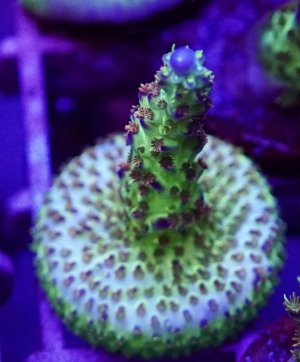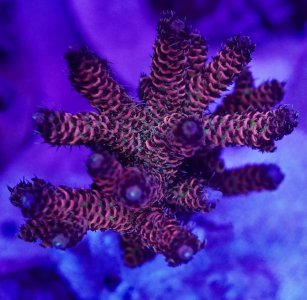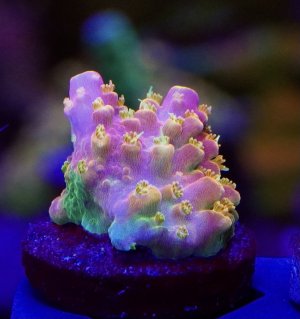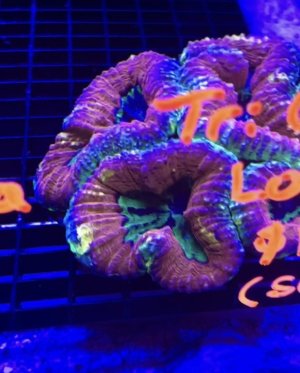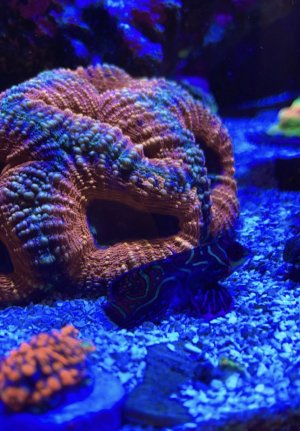You are using an out of date browser. It may not display this or other websites correctly.
You should upgrade or use an alternative browser.
You should upgrade or use an alternative browser.
This is why I have trust issues
- Thread starter Rainblood
- Start date
its tough, cause I had acquired todd’s torch from someone and when i got them, they showed the extension and blue tips todd’s torch are known for. I put them in my tank, the tips turned pink and not much extension. Lucky tho, I have a vid of when I got I first picked it up. So, yeah, corals can be weird from tank to tank.
At least thats not one of the photoshopped/filtered messes you find on some sites
Here is a great example of how an acro could change significantly from one tank to another. I trust Hui, so when he told me it was a Bali Shortcake, I believe him, but he couldn't get it to color up so I bought it from him to give it a try. Here are date stamps of when I picked it up to how it is now.


Wow. That's crazy. And looks great.
Agree 1000%. 470nm is the sweet spotMore blue light (found the sweet spot to be around 470nm) translates to more color from my experience, less algae too. Feeding ( nitrate and Phosphate) along with supplemental trace elements will also affect coloration.
View attachment 81154View attachment 81155View attachment 81156View attachment 81157View attachment 81158View attachment 81159
I haven’tHave y’all compared parameters, lights, placement? Just curious about cause/effect
What are you using for dosing nitrates?More blue light (found the sweet spot to be around 470nm) translates to more color from my experience, less algae too. Feeding ( nitrate and Phosphate) along with supplemental trace elements will also affect coloration.
View attachment 81154View attachment 81155View attachment 81156View attachment 81157View attachment 81158View attachment 81159
I use Bionic Nitrate.What are you using for dosing nitrates?
dumb question prolly, how y'all measuring 470 nm?Agree 1000%. 470nm is the sweet spot
Not at all a dumb question. The Apogee MQ-510 will give you the spectral range from 389-692 if I recall those correctly. Also if you look up the manufacture of your LED they will give you the ranges they are set to. The Orphek Blue Plus bars are in the 410-480nm.dumb question prolly, how y'all measuring 470 nm?
If you mean measuring a specific, or a narrow range, wavelength(s) ~470 nM +/- there are a few ways. All cost money, mostly depending on their accuracy -dumb question prolly, how y'all measuring 470 nm?
A quantum narrow band spectrum analyzer, which is an expensive instrument, but gives calibrated data on narrow bands of irradiance across its measuring range of wavelengths. May employ internal diffraction gratings or filters. May or may not deliver PAR or PUR readings, but costs more if it does. These type instruments are available, typically used in R&D and cost a lot of money.
A practical, likely less accurate, way is using an inexpensive PAR/PUR meter like an Apogee or Seneye with a narrow band filter. Once you afix/mount the filter(s) you will need to calibrate the instrument using a known source of light & irradiance levels. Such as this filter for $160 -

470nm CWL, 25mm Dia., 10nm FWHM, Interference Filter
Traditional coated 400-699nm bandpass interference filters used in optics and photonics applications are available at Edmund Optics
www.edmundoptics.com
I ordereded some sodium nitrate from Amazon since its fairly inexpensive and I can’t seem to get any nitrates no matter how much I feed.I use Bionic Nitrate.
Your tank looks good buddy…are you sure you want to mess with it?I ordereded some sodium nitrate from Amazon since its fairly inexpensive and I can’t seem to get any nitrates no matter how much I feed.
Similar threads
- Replies
- 0
- Views
- 42
- Replies
- 0
- Views
- 107
- Replies
- 6
- Views
- 588
- Replies
- 8
- Views
- 512





